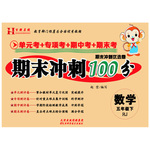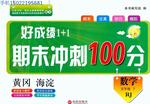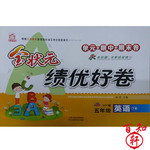
閱讀短文,根據(jù)所要求的字?jǐn)?shù)回答問題。
Almost everybody in America will spend a part of his or her life behind a shopping cart (購物手推車).They will, in a lifetime, push the chrome-plated contraptions many miles.But few will know—or even think to ask—who it was that invented them.
Sylvan N.Goldman invented the shopping cart in 1937.At that time he was in the supermarket business.Every day he would see shoppers lugging (吃力地攜帶) groceries around in baskets they had to carry.
One day Goldman suddenly had the idea of putting baskets on wheels.The wheeled baskets would make shopping much easier for his customers, and would help to attract more business.
On June 4, 1937, Goldman’s first carts were ready for use in his market.He was terribly excited on the morning of that day as customers began arriving.He couldn’t wait to see them using his invention.
But Goldman was disappointed.Most shoppers gave the carts a long look, but hardly anybody would give them a try.
After a while, Goldman decided to ask customers why they weren’t using his carts.“Don’t you think this arm is strong enough to carry a shopping basket?” one shopper replied.
But Goldman wasn’t beaten yet.He knew his carts would be a great success if only he could persuade people to give them a try.To this end, Goldman hired a group of people to push carts around his market and pretend they were shopping! Seeing this, the real customers gradually began copying the phony (假冒的) customers.{007}
As Goldman had hoped, the carts were soon attracting larger and larger numbers of customers to his market.But not only did more people come—those who came bought more.With larger, easier-to-handle baskets, customers unconsciously bought a greater number of items than before.
Today’s shopping carts are five times larger than Goldman’s original model.Perhaps that’s one reason Americans today spend more than five times as much money on food each year as they did before 1937—before the coming of the shopping cart.
1.What was the purpose of Goldman’s invention? (No more than 13 words)
__________________________________________________________.
2.Why was Goldman disappointed at first? (No more than 10 words)
__________________________________________________________.
3.Why did Goldman hire people to push carts around his market? (No more than 10 words)
__________________________________________________________.
4.What do you think of Goldman? (No more than 20 words)
_______________________________________________________________________.
1.It was to make shopping easier and attract more business.
2.Because few customers used his carts.
3.Because he wanted to promote his shopping carts.
4.He was a smart businessman.He invented the shopping cart and made it accepted by customers./ He was smart but he shouldn’t have used tricks to attract customers.


 期末好成績系列答案
期末好成績系列答案 99加1領(lǐng)先期末特訓(xùn)卷系列答案
99加1領(lǐng)先期末特訓(xùn)卷系列答案 百強(qiáng)名校期末沖刺100分系列答案
百強(qiáng)名校期末沖刺100分系列答案 好成績1加1期末沖刺100分系列答案
好成績1加1期末沖刺100分系列答案 金狀元績優(yōu)好卷系列答案
金狀元績優(yōu)好卷系列答案
| 年級 | 高中課程 | 年級 | 初中課程 |
| 高一 | 高一免費(fèi)課程推薦! | 初一 | 初一免費(fèi)課程推薦! |
| 高二 | 高二免費(fèi)課程推薦! | 初二 | 初二免費(fèi)課程推薦! |
| 高三 | 高三免費(fèi)課程推薦! | 初三 | 初三免費(fèi)課程推薦! |
科目:高中英語 來源:湖南省2009-2010學(xué)年度高一第二學(xué)期第一學(xué)段考試英語試卷 題型:填空題
第二節(jié)簡答題(共4小題; 10分)
閱讀短文,根據(jù)所要求的字?jǐn)?shù)回答問題。
TV viewers may no longer be able to hear English abbreviations (縮寫), like "NBA" (National Basketball Association), from mainland broadcasters.
China Central Television (CCTV) and Beijing Television (BTV) confirmed to China Daily on Tuesday that they had received a notice from a related government department, asking them to avoid using certain English abbreviations in Chinese programs.
The channels, however, did not reveal exactly how many English abbreviations are listed in the notice.
The notice not only limits the use of English abbreviations in sports news, but also in economic and political news. Abbreviations such as "GDP" (gross domestic product), "WTO" (World Trade Organization) and "CPI" (consumer price index) will also be substituted(代替)with their Chinese pronunciations, it said.
The move comes after a growing number of national legislators(立法委員)and political advisors called for preventive measures to preserve(保存)the purity of the Chinese language.
"If we don't pay attention and don't take measures to stop mixing Chinese with English, the Chinese language won't remain pure in a couple of years," said Huang Youyi, editor-in-chief of the China International Publishing Group and secretary-general of the Translators' Association of China.
The restricted use of English abbreviations on Chinese television programs has provoked a debate among scholars.
"It makes no sense to introduce a regulation to prevent the use of English in the Chinese language in the face of globalization(全球化)," Liu Yaoying, a professor at the Communication University of China, said on Tuesday. "It is cultural conservatism(保守主義)。"
"If Western countries can accept some Chinglish words, why can't the Chinese language be mixed with English?"
86. What does the government tell TV stations to do in the notice? (no more than 12 words)
_________________________________________________.
87. In what TV programs English abbreviations are limited? (List three of them)
_________________________________________________.
88. According to Huang Youyi’s opinion, why should we stop using English abbreviations?
(no more than 10 words)
_________________________________________________.
89. “Chinglish” in the last sentence means __________________. (no more than 10 words)
查看答案和解析>>
科目:高中英語 來源: 題型:閱讀理解
第二節(jié) 簡答題(共4小題; 10分)
閱讀短文,根據(jù)所要求的字?jǐn)?shù)回答問題。
Almost everybody in America will spend a part of his or her life behind a shopping cart (購物手推車). They will, in a lifetime, push the chrome-plated contraptions many miles. But few will know—or even think to ask—who it was that invented them.
Sylvan N. Goldman invented the shopping cart in 1937. At that time he was in the supermarket business. Every day he would see shoppers lugging (吃力地攜帶) groceries around in baskets they had to carry.
One day Goldman suddenly had the idea of putting baskets on wheels. The wheeled baskets would make shopping much easier for his customers, and would help to attract more business.
On June 4, 1937, Goldman’s first carts were ready for use in his market. He was terribly excited on the morning of that day as customers began arriving. He couldn’t wait to see them using his invention.
But Goldman was disappointed. Most shoppers gave the carts a long look, but hardly anybody would give them a try.
After a while, Goldman decided to ask customers why they weren’t using his carts. “Don’t you think this arm is strong enough to carry a shopping basket?” one shopper replied.
But Goldman wasn’t beaten yet. He knew his carts would be a great success if only he could persuade people to give them a try. To this end, Goldman hired a group of people to push carts around his market and pretend they were shopping! Seeing this, the real customers gradually began copying the phony (假冒的) customers. {007}
As Goldman had hoped, the carts were soon attracting larger and larger numbers of customers to his market. But not only did more people come—those who came bought more. With larger, easier-to-handle baskets, customers unconsciously bought a greater number of items than before.
Today’s shopping carts are five times larger than Goldman’s original model. Perhaps that’s one reason Americans today spend more than five times as much money on food each year as they did before 1937—before the coming of the shopping cart.
86. What was the purpose of Goldman’s invention? (No more than 13 words)
__________________________________________________________.
87. Why was Goldman disappointed at first? (No more than 10 words)
__________________________________________________________.
88. Why did Goldman hire people to push carts around his market? (No more than 10 words)
__________________________________________________________.
89. What do you think of Goldman? (No more than 20 words) _______________________________________________________________________.
查看答案和解析>>
科目:高中英語 來源: 題型:閱讀理解
第二節(jié) 簡答題(共4小題; 10分)
閱讀短文,根據(jù)所要求的字?jǐn)?shù)回答問題。
TV viewers may no longer be able to hear English abbreviations (縮寫), like "NBA" (National Basketball Association), from mainland broadcasters.
China Central Television (CCTV) and Beijing Television (BTV) confirmed to China Daily on Tuesday that they had received a notice from a related government department, asking them to avoid using certain English abbreviations in Chinese programs.
The channels, however, did not reveal exactly how many English abbreviations are listed in the notice.
The notice not only limits the use of English abbreviations in sports news, but also in economic and political news. Abbreviations such as "GDP" (gross domestic product), "WTO" (World Trade Organization) and "CPI" (consumer price index) will also be substituted(代替)with their Chinese pronunciations, it said.
The move comes after a growing number of national legislators(立法委員)and political advisors called for preventive measures to preserve(保存)the purity of the Chinese language.
"If we don't pay attention and don't take measures to stop mixing Chinese with English, the Chinese language won't remain pure in a couple of years," said Huang Youyi, editor-in-chief of the China International Publishing Group and secretary-general of the Translators' Association of China.
The restricted use of English abbreviations on Chinese television programs has provoked a debate among scholars.
"It makes no sense to introduce a regulation to prevent the use of English in the Chinese language in the face of globalization(全球化)," Liu Yaoying, a professor at the Communication University of China, said on Tuesday. "It is cultural conservatism(保守主義)。"
"If Western countries can accept some Chinglish words, why can't the Chinese language be mixed with English?"
86. What does the government tell TV stations to do in the notice? (no more than 12 words)
_________________________________________________.
87. In what TV programs English abbreviations are limited? (List three of them)
_________________________________________________.
88. According to Huang Youyi’s opinion, why should we stop using English abbreviations?
(no more than 10 words)
_________________________________________________.
89. “Chinglish” in the last sentence means __________________. (no more than 10 words)
查看答案和解析>>
科目:高中英語 來源: 題型:閱讀理解
閱讀短文,根據(jù)所要求的字?jǐn)?shù)回答問題。
Almost everybody in America will spend a part of his or her life behind a shopping cart (購物手推車).They will, in a lifetime, push the chrome-plated contraptions many miles.But few will know—or even think to ask—who it was that invented them.
Sylvan N.Goldman invented the shopping cart in 1937.At that time he was in the supermarket business.Every day he would see shoppers lugging (吃力地攜帶) groceries around in baskets they had to carry.
One day Goldman suddenly had the idea of putting baskets on wheels.The wheeled baskets would make shopping much easier for his customers, and would help to attract more business.
On June 4, 1937, Goldman’s first carts were ready for use in his market.He was terribly excited on the morning of that day as customers began arriving.He couldn’t wait to see them using his invention.
But Goldman was disappointed.Most shoppers gave the carts a long look, but hardly anybody would give them a try.
After a while, Goldman decided to ask customers why they weren’t using his carts.“Don’t you think this arm is strong enough to carry a shopping basket?” one shopper replied.
But Goldman wasn’t beaten yet.He knew his carts would be a great success if only he could persuade people to give them a try.To this end, Goldman hired a group of people to push carts around his market and pretend they were shopping! Seeing this, the real customers gradually began copying the phony (假冒的) customers.
As Goldman had hoped, the carts were soon attracting larger and larger numbers of customers to his market.But not only did more people come—those who came bought more.With larger, easier-to-handle baskets, customers unconsciously bought a greater number of items than before.
Today’s shopping carts are five times larger than Goldman’s original model.Perhaps that’s one reason Americans today spend more than five times as much money on food each year as they did before 1937—before the coming of the shopping cart.
1.What was the purpose of Goldman’s invention? (No more than 13 words)
__________________________________________________________.
2.Why was Goldman disappointed at first? (No more than 10 words)
__________________________________________________________.
3.Why did Goldman hire people to push carts around his market? (No more than 10 words)
__________________________________________________________.
4.What do you think of Goldman? (No more than 20 words)
_______________________________________________________________________.
查看答案和解析>>
湖北省互聯(lián)網(wǎng)違法和不良信息舉報平臺 | 網(wǎng)上有害信息舉報專區(qū) | 電信詐騙舉報專區(qū) | 涉歷史虛無主義有害信息舉報專區(qū) | 涉企侵權(quán)舉報專區(qū)
違法和不良信息舉報電話:027-86699610 舉報郵箱:58377363@163.com